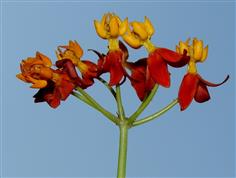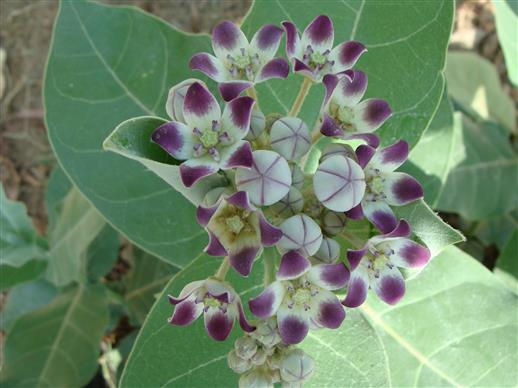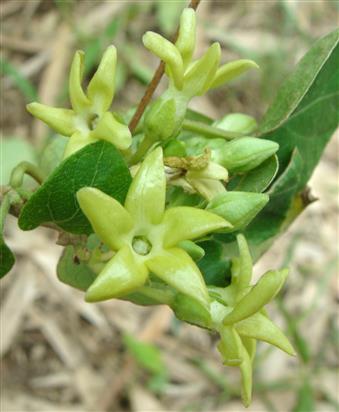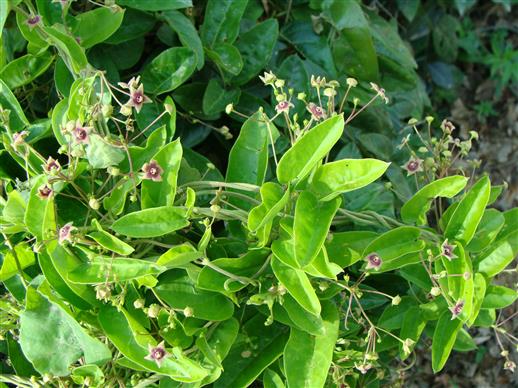ASCLEPIADACEAE**
Herbs or shrubs, often twining, usually with milky juice. Leaves opposite or whorled, sometimes obsolete, entire, often glands at base of midrib, stipules absent. Flowers bisexual, actinomorphic, 5-merous, hypogynous. Inflorescence usually umbelliform cymes, axillary or extra-axillary. Sepals 5, free, sometimes fused at base; lobes 5, imbricate, often with minute glands at base within. Petals 5, fused, often 5-fid; corolla tube usually short, lobes usually valvate or overlapping to the right. Corona of 5 or more scales or appendages, attached to corolla tube, or to staminal column or to both, sometimes minute or wanting, various in form. Stamens 5, inserted at base of corolla and alternate with its lobes; filaments free or united in a short fleshy column around the ovary, apex of staminal column united to much dilated stigma forming the stigmatic disc or gynostegium; anthers bithecous (2-celled), coherent around the stigmas, pollens of each cell usually united in granular or waxy pollen masses, the pollinia; pollinia of the adjoining cells of two contiguous anthers united in pairs either directly or by horny appendages (caudicles) to black dot-like glands, the corpusculum lying at the angles of stigmatic disc. Two pollinia with caudicles and corpusculum form the Translator Apparatus acting as a means of pollen dispersal by insects. Carpels 2, apocarpous; ovaries 2, free, superior, unilocular, enclosed within the staminal column, ovules numerous, placentation marginal; styles 2, free; stigmas connate to form 5-angular stigmatic disc with which anthers are coherent to form gynostegium. Fruit an etaerio of 2 follicles or 1 by suppression. Seed numerous, usually flat, often margined, crowned with a tuft of long hairs.
348 genera and 2900 species
**Now treated as subfamily Asclepidioideae of the family Apocynaceae



